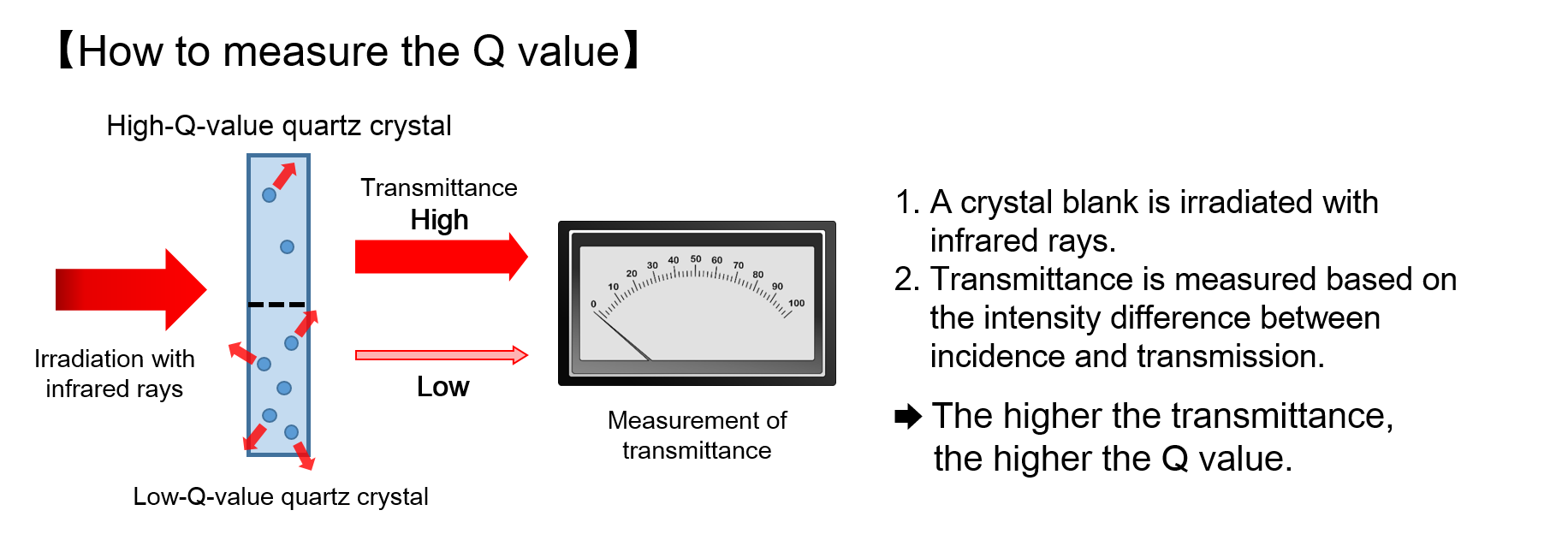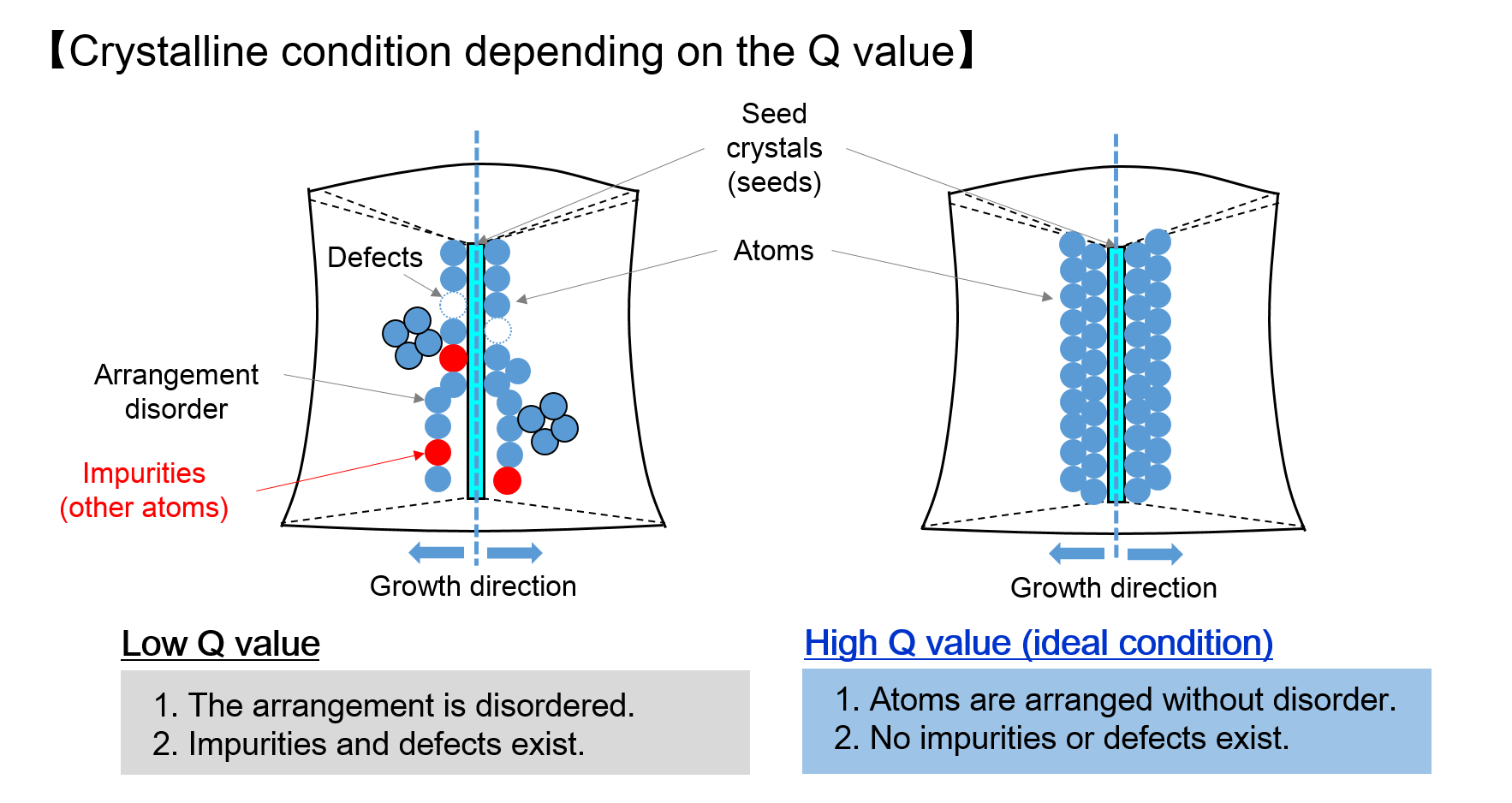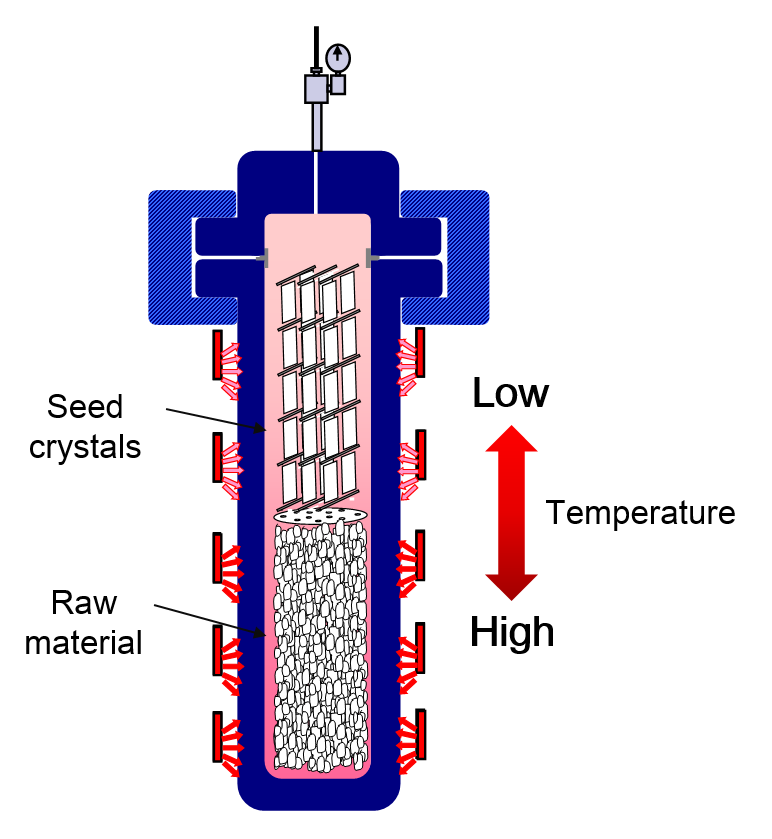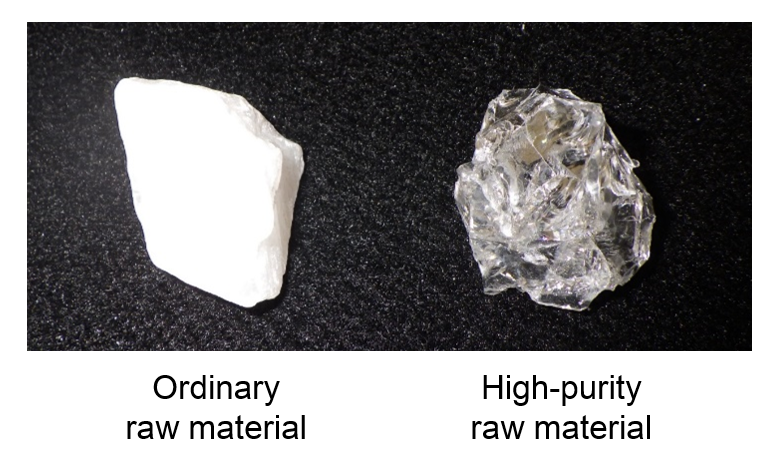The challenge to achieve ultra-high-purity synthetic quartz crystals, namely, "perfect crystals"
As time progresses, quartz crystal devices are required to achieve higher frequency and accuracy. To meet such requirements, both processing technologies and ultra-high-purity synthetic quartz crystals with very few impurities and defects are necessary.
This story focuses on our challenge to grow ultra-high-purity synthetic quartz crystals.
Q value: an index that represents the quality and purity of synthetic quartz crystals
A numerical value called the “Q value” is used as an index for synthetic quartz crystals. The higher the Q value, the higher the quality and purity. The Q value is obtained by allowing infrared rays to penetrate a crystal blank and measuring the transmittance. However, the penetration is obstructed by impurities and defects as well as disorders in the atomic arrangement. That is, when the transmittance of infrared rays is high, the Q value is high, and therefore the quality and purity are high.


Issues to be addressed in growing ultra-high-purity crystals
It is difficult to grow perfect crystals using conventional furnaces. Issues 1️⃣ to 4️⃣ below must therefore be addressed.
1️⃣ Temperature fluctuation inside the growing furnace due to changes in the outside air temperature
During the growth of synthetic quartz crystals, changes in the outside air temperature cause the temperature inside the growing furnace to fluctuate and thus affect the quality. The changes in the internal temperature affect the crystalline arrangement. The arrangement is disrupted each time the temperature fluctuates.
2️⃣ Inability to further reduce the rate of growth
 To grow synthetic quartz crystals, the raw material (natural quartz crystals) is placed at the bottom of the growing furnace, and tabular quartz crystals called “seed crystals” (seeds) are placed at the top.
To grow synthetic quartz crystals, the raw material (natural quartz crystals) is placed at the bottom of the growing furnace, and tabular quartz crystals called “seed crystals” (seeds) are placed at the top.
The growing furnace filled with an alkaline solution is heated and pressurized to melt the raw material, which recrystallizes on the surface of the seed crystals. In the growing furnace, recrystallization proceeds due to the convection caused by the temperature difference between the raw material area and the seed crystal area. The smaller the temperature difference, the slower the growth of the synthetic quartz crystals, resulting in fewer impurities and crystalline defects, with atoms being arranged without disorder.
The temperature difference should be minimized to grow synthetic quartz crystals of higher purity. However, if the temperature difference were reduced too much (by increasing the temperature of the seed crystal area), the seed crystals would also melt.
3️⃣ Impact of impurities contained in the raw material
Natural quartz crystals, which are used as the raw material, contain impurities. About 90% of impurities are removed in the process of growing synthetic quartz crystals. The remaining impurities are contained in the recrystallized synthetic quartz crystals.
4️⃣ Melting of the seed crystals in the growing process when high-purity quartz crystals are used as the raw material
 Issue 3️⃣ can be solved by using quartz crystals of higher purity as the raw material. However, high-purity quartz crystals are characterized by high density and therefore are difficult to melt compared to the ordinary raw material. Such quartz crystals can be melted at high temperature, but it takes time to heat the growing furnace. During this period, the quartz crystals in the seed crystal area run short, causing the seed crystals to melt.
Issue 3️⃣ can be solved by using quartz crystals of higher purity as the raw material. However, high-purity quartz crystals are characterized by high density and therefore are difficult to melt compared to the ordinary raw material. Such quartz crystals can be melted at high temperature, but it takes time to heat the growing furnace. During this period, the quartz crystals in the seed crystal area run short, causing the seed crystals to melt.
Challenge to solve the issues
To solve these issues, we have introduced a new growing furnace. After reviewing the thermal insulation and temperature adjustment structure, temperature control was achieved with accuracy of ±0.1°C. Issues 1️⃣ and 2️⃣ were therefore solved. We also succeeded in reducing the growing furnace heating time to one third that of a conventional furnace by changing the design of the growing furnace heater to attain high efficiency. This made it possible to cope with issues 3️⃣ and 4️⃣ as well.
Development of ultra-high-purity synthetic quartz crystals
The Q value of synthetic quartz crystals grown in a conventional furnace is 2.4 million to 3.4 million. However, by using a growing furnace enabling precise temperature control and a high-purity raw material, we succeeded in growing ultra-high-purity synthetic quartz crystals whose Q value is 4.3 million, with about 1/100 of the impurities of conventional synthetic quartz crystals.
We remain committed to growing synthetic quartz crystals with higher Q values.

